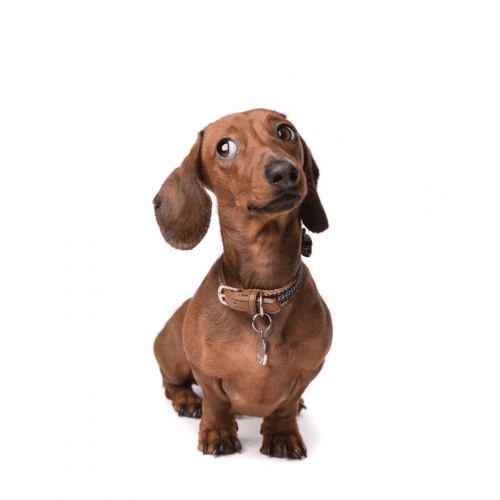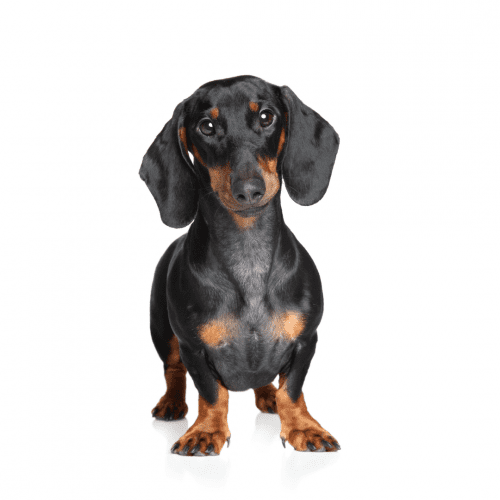Dachshunds are one of the most popular dog breeds in the world. These little dogs are known for their playful personality and adorable face. They come in a variety of colors and coat types, so there is sure to be a dachshund dog breed that is perfect for you.
Imagine a dog with a long, low-slung body, a sleek coat, and an expression of intelligence and determination. This is the Dachshund, a unique breed that has captured the hearts of dog lovers worldwide. But what sets these dogs apart from the rest? What is their origin, and how do they serve humans? From their distinctive appearance to their diverse uses, Dachshunds offer a wealth of interesting facts and information that will surely pique your curiosity. So, whether you’re a seasoned Dachshund enthusiast or simply curious about this intriguing breed, prepare to embark on a fascinating journey into the world of Dachshunds.
The Dachshund is a unique and distinctive dog breed known for its elongated body and short legs. They come in different sizes, including standard, miniature, and toy. Dachshunds have a muscular build and a deep chest, which allows them to navigate through tunnels and caves easily. Their keen sense of smell and strong instinct make them excellent hunters. In terms of temperament, Dachshunds can be pretty stubborn and independent. They’re known to have a strong personality and can be protective of their family. However, they’re also loyal, affectionate, and playful. Dachshunds thrive on attention and enjoy being part of family activities. Unfortunately, Dachshunds are prone to specific health issues, such as inter-vertebral disc disease, which is expected due to their long spinal structure. They may also suffer from obesity, dental problems, and eye conditions. Regular exercise, a balanced diet, and routine veterinary check-ups are essential for their well-being. Training a Dachshund can be challenging due to their independent nature. Patience, consistency, and positive reinforcement techniques are critical to successful training. Start training early and socialize with other dogs and people to prevent behavioral issues. Dachshunds remain popular as family pets despite their training challenges and potential health issues. Their small size, affectionate nature, and loyalty make them great companions for individuals and families.
Dachshund dogs stand out from other dog breeds due to their distinctive physical features and strong hunting instincts. These unique characteristics make them easily recognizable and set them apart from their canine counterparts. One of the distinguishing traits of Dachshunds is their elongated body shape. Their long, low-slung bodies and short legs give them a distinct appearance that’s instantly recognizable. This physical feature was specifically bred for their hunting abilities, allowing them to maneuver through tunnels and caves while chasing small game. Another standout quality of Dachshunds is their keen sense of smell. They have an exceptional ability to track scents, making them excellent hunting companions. In some circles, this key attribute has earned them the nickname ‘sausage dog,’ as they were initially bred to hunt badgers. In addition to their distinctive physical features and hunting instincts, Dachshunds possess a lively and courageous personality. Despite their small size, they have a bold and fearless nature. They’re often described as affectionate, intelligent, and fiercely loyal to their families.
The Dachshund dog group includes a variety of breeds that share similar physical characteristics and hunting instincts. These different breeds may vary in size, color, temperament, and health issues. Regarding size, Dachshunds come in three main varieties: standard, miniature, and toy. The standard Dachshund typically weighs between 16 and 32 pounds, while the miniature Dachshund weighs around 11 pounds or less. The toy Dachshund is the smallest, weighing under 8 pounds. In terms of color, Dachshunds come in a wide range of options. They can have solid colors like red, black, chocolate, or cream. There are also dapple, piebald, and brindle patterns, which add an exciting and unique touch to their appearance. Dachshunds are known for their lively and sometimes stubborn temperament. They’re intelligent, independent, and courageous dogs. However, they can also be prone to separation anxiety and may become territorial if not properly socialized. Like many dog breeds, Dachshunds are predisposed to certain health issues. These include inter-vertebral disc disease, which can lead to back problems, as well as obesity, dental issues, and eye conditions. Regular exercise, a balanced diet, and regular veterinary check-ups can help mitigate these potential health concerns.
Originating in Germany, the Dachshund dog breed has a rich history dating back several centuries. The origin of Dachshunds can be traced back to the 15th century when they were primarily bred for hunting purposes. Their unique body shape and short legs allowed them to burrow into tunnels and flush out badgers, so they’re sometimes called ‘badger dogs’ in Germany. Dachshunds gained popularity in the early 17th century when they became favored by the German nobility. Their small size, distinctive appearance, and playful nature made them a beloved companion and lapdog. Over time, their popularity spread across Europe and eventually to the United States. Known for their long bodies, short legs, and distinctive floppy ears, Dachshunds come in three coat varieties: smooth, wire-haired, and long-haired. They also have various colors and patterns, including red, black, tan, and dapple. Today, Dachshunds are still popular pets around the world. Their friendly and outgoing nature, intelligence, and loyalty make them great family pets.
Additionally, their adaptability to different living environments, from apartments to larger houses, contributes to their continued popularity. Several famous Dachshunds have captured the public’s attention over the years. Waldi, the mascot of the 1972 Summer Olympics in Munich, was a Dachshund. Well-known writers such as Charles Dickens and E.B. White owned Dachshunds, showcasing their enduring appeal.
After gaining popularity as beloved companions and lapdogs, Dachshunds have found various uses in the lives of humans. These versatile dogs have been employed in multiple working roles, making them highly valuable to their owners. One notable role is that of therapy dogs. Dachshunds are known for their friendly and affectionate nature, making them ideal companions for individuals in hospitals, nursing homes, and other therapeutic environments. Their small size and gentle demeanor provide comfort and emotional support to those in need. Another area where Dachshunds excel is in hunting. With their keen sense of smell and tenacious nature, these dogs have been used for centuries to track and flush out game, particularly badgers. Their long, low-slung bodies and strong legs enable them to easily maneuver through dense underbrush and caves, making them highly effective in the field. Dachshunds have also made a name for themselves in search and rescue work. Their small size allows them to access narrow spaces that larger dogs can’t reach, making them invaluable in situations where people or animals are trapped or lost. Their determination and intelligence make them excellent at locating and alerting their handlers to those needing assistance. Lastly, Dachshunds have found success in competitive sports. Their agility, speed, and natural athleticism make them well-suited for agility trials, obedience competitions, and dock diving. Their eager and outgoing personalities make them a joy to train and compete with, and they often excel in these areas.
People from all walks of life are drawn to dachshund dogs for their unique characteristics and endearing personalities. Dachshunds are versatile dogs that can connect with a variety of owners. One type of owner that often gravitates toward Dachshunds is someone needing a therapy dog. Dachshunds are gentle and can support individuals suffering from anxiety or depression. Additionally, Dachshunds are known for their intelligence and train-ability, making them a popular choice for owners interested in obedience training. They’re eager to please and can quickly learn commands and tricks. Families also find Dachshunds to be a great fit. These dogs are loving and loyal and get along well with children. Dachshunds are also an excellent choice for active individuals. Despite their small size, they have a lot of energy and love going on walks or playing fetch. Their short legs may be deceiving, but they can keep up with their active owners.
Dachshunds, with their distinctive long bodies and short legs, are known for their playful and curious nature. Regarding exercise needs, Dachshunds require regular physical activity to maintain a healthy weight and prevent obesity. They have moderate energy and enjoy walks, playtime, and interactive toys. However, it’s important to note that excessive exercise or activities that strain their backs should be avoided, as Dachshunds are prone to back problems due to their long spinal structure. In terms of health issues, Dachshunds are susceptible to certain conditions. Their long spines make them prone to inter-vertebral disc disease, which can result in back pain and mobility issues. They’re also more prone to obesity, dental problems, and certain eye conditions. Regular veterinary check-ups and a nutritious diet are essential for maintaining their overall well-being. Dachshunds have a distinct temperament characterized by loyalty, intelligence, and independence. They’re generally friendly and affectionate with their families and can be protective. However, they can be stubborn sometimes, so consistent and positive training methods are essential. Socialization from an early age is also crucial to ensure they get along well with other animals and people.
Regarding grooming requirements, Dachshunds have a short coat that’s easy to maintain. Regular brushing helps to remove loose hair and keep their coat in good condition. They’re average shedders and may benefit from occasional bathing to keep them clean and fresh. Additionally, regular nail trims, ear cleaning, and dental care should be a part of their grooming routine.





